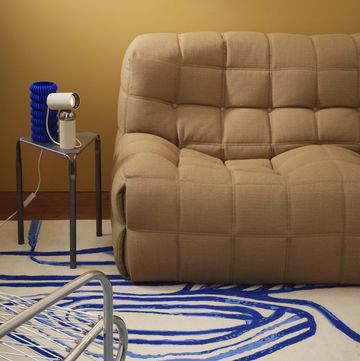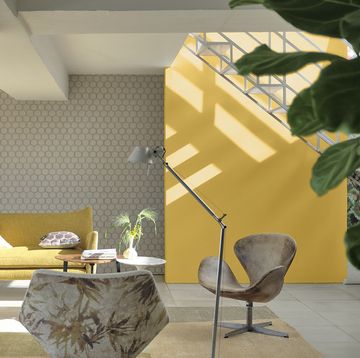Your front door is more than just a way into your home – it’s the first thing people see, and the final thing they remember. ‘Choosing the right colour is a chance to say something special about who lives there,’ says Marianne Shillingford, creative director at Dulux.
‘We often focus on interiors and forget that the front door plays such a powerful role. Don’t be afraid to be bolder than you would indoors – who doesn’t want to come home to a colour that lifts their spirits before they even step inside?’
When painting a front door, an exterior-grade, water-based paint is best due to its quick drying time and lower VOC content, which makes it more environmentally sound. ‘Exterior woodwork will flex with changes in temperature and humidity throughout the year, so look for advanced moisture protection and fade resistance,’ suggests Helen Shaw, director of marketing at Benjamin Moore.
Semi-gloss is a good choice as it’s durable and easy to clean, while satin offers a more matte look. High-shine, full-gloss paints are also on trend and are really hard-wearing, but bear in mind that they do show imperfections more readily.
As with any decorating task, preparation is everything, and doors need lots of work to achieve a flawless, long-lasting finish. That said, it’s not an overly complicated process and requires only a few key steps.
Start by removing any fittings (handles, locks etc) or cover them with painter’s tape. Next, clean the surface with a degreaser or mild dish soap and water to remove dirt and mildew. Sand with medium-grit paper to smooth out imperfections and remove flaking paint, then fill any holes or cracks with an exterior-grade filler. Once set, sand again, as this also helps your primer adhere properly. Wipe with a soft cloth to remove dust, then apply two coats of primer, sanding lightly in between. Finish with two top coats of your chosen colour.
Specialist tools aren’t necessary, but a good-quality brush or fine foam roller will help achieve a professional finish. And don’t forget the weather: ‘Paint it on a mild, dry day,’ says Dominic Myland, chief executive officer of Mylands. ‘It’s also best not to work in direct sunlight, as this can cause paint to dry too quickly, leading to an uneven finish, brush marks and poor adhesion.’
What constitutes the ‘right’ colour is, of course, subjective, but think about how a shade will respond next to the brick, stone or render of your home’s façade. Strong shades work well in urban areas, but in the countryside, a colour that mimics or complements the environment may be better than one that distracts from it.
Details are important, too. ‘Often, doors will have a thin wooden frame and most people leave this white – but don’t!’ advises Patrick O’Donnell, brand ambassador at Farrow & Ball. ‘Painting it in the same colour will help create a greater sense of scale and proportion.’ Alternatively, a contrasting frame in a paler colour creates an architectural feel. ‘This will give the illusion of a grander entrance,’ says Myland.


















